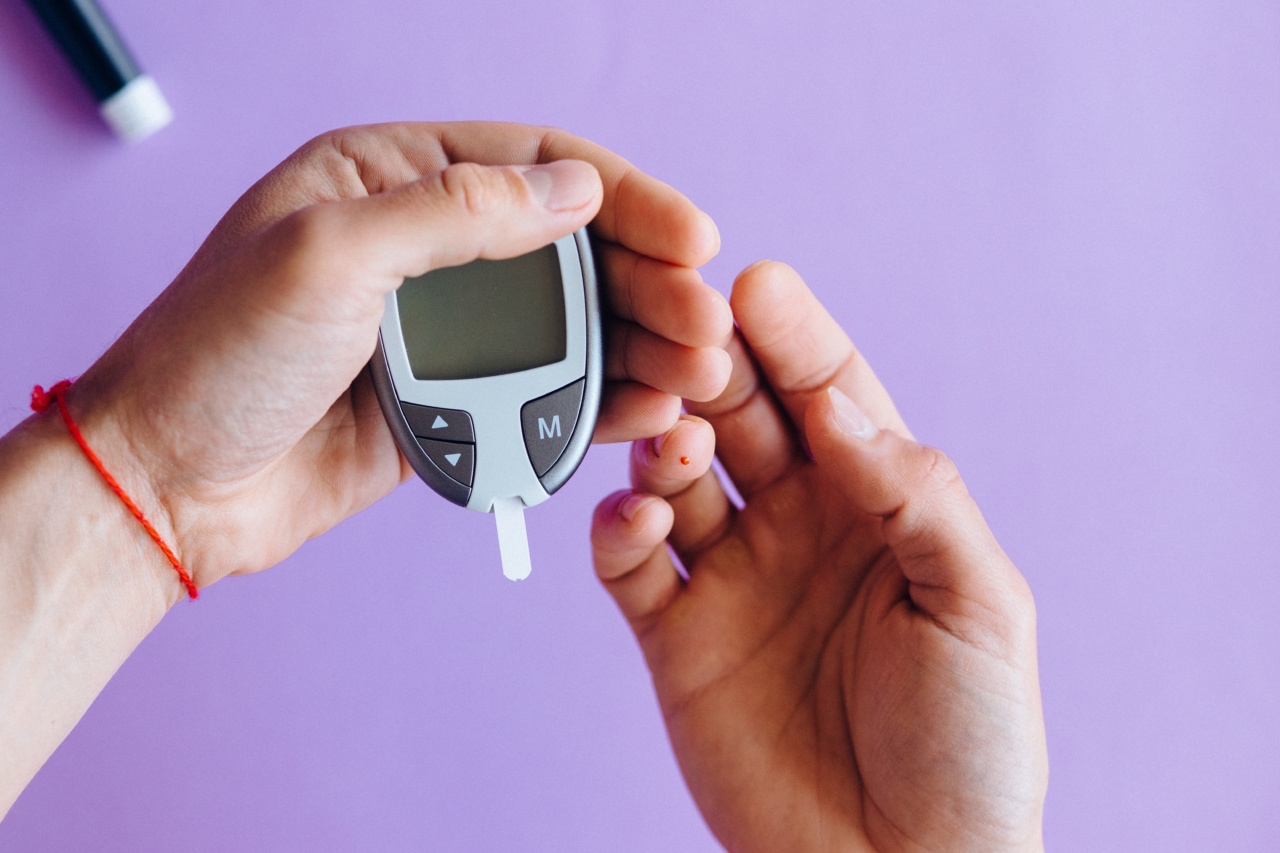Gestational diabetes is a type of diabetes that occurs during pregnancy. It is characterized by high blood sugar levels that develop or are first recognized during pregnancy.
This condition affects about 2-10% of pregnant women, usually around the 24th to 28th week of pregnancy. Gestational diabetes can pose risks both to the mother and the baby, but with proper management and care, these risks can be minimized.
Causes of Gestational Diabetes
The exact cause of gestational diabetes is still unknown, but it is believed to be related to the hormonal changes and increased insulin resistance that occur during pregnancy.
The placenta produces hormones that can interfere with the mother’s insulin, leading to elevated blood sugar levels. Some women may be more predisposed to developing gestational diabetes due to factors such as obesity, family history of diabetes, or previous history of gestational diabetes.
Symptoms of Gestational Diabetes
Unlike other types of diabetes, gestational diabetes often does not present noticeable symptoms.
However, some women may experience symptoms such as increased thirst, frequent urination, fatigue, blurred vision, or frequent vaginal or bladder infections. If you suspect you may have gestational diabetes, it is important to consult with your healthcare provider for proper testing and diagnosis.
The Importance of the Sugar Curve Test
The sugar curve test, also known as the oral glucose tolerance test (OGTT), is a diagnostic test used to determine if a pregnant woman has gestational diabetes. This test measures how the body metabolizes glucose over a specific period of time.
It involves drinking a sugary solution and having blood drawn at regular intervals to measure blood sugar levels.
Preparing for the Sugar Curve Test
Prior to taking the sugar curve test, your healthcare provider will provide specific instructions on how to prepare. It may involve fasting for a certain number of hours beforehand, typically overnight, to ensure accurate results.
It is important to follow these instructions closely to obtain valid and reliable results.
How is the Sugar Curve Test Performed?
The sugar curve test is typically performed in the morning. Before the test begins, a baseline blood sugar level will be measured by drawing a blood sample.
Then, you will be asked to drink a solution containing a precise amount of glucose within a specific time frame. Blood samples will be taken at regular intervals, usually every hour, to monitor how your body processes the glucose. The test usually takes around 2-3 hours to complete.
Interpreting the Results
The results of the sugar curve test are typically given in the form of a graph or curve that shows the changes in blood sugar levels over time.
The test results are evaluated by comparing the measured blood sugar levels to specific thresholds set by healthcare providers. If blood sugar levels are consistently higher than the established thresholds, it indicates gestational diabetes.
Managing Gestational Diabetes
When diagnosed with gestational diabetes, it is crucial to work closely with your healthcare team to manage the condition effectively.
The primary goals of managing gestational diabetes are to control blood sugar levels and minimize potential risks to both the mother and baby. Treatment may include lifestyle modifications such as healthy eating, regular physical activity, and monitoring blood sugar levels. In some cases, insulin injections or oral medications may be necessary to help control blood sugar levels.
Dietary Guidelines for Gestational Diabetes
A balanced and nutritious diet plays a crucial role in managing gestational diabetes. Here are some general dietary guidelines to follow:.
1.Eat Regular Meals and Snacks
Divide your daily food intake into three main meals and two to three small snacks. Avoid skipping meals as it can lead to fluctuations in blood sugar levels.
2.Choose Low Glycemic Index Foods
Foods with a low glycemic index (GI) have a slower impact on blood sugar levels. Include whole grains, legumes, vegetables, and fruits with a low GI in your diet.
3.Consume Adequate Fiber
Fiber-rich foods help regulate blood sugar levels and promote digestive health. Opt for whole grains, fruits, vegetables, and legumes to increase your fiber intake.
4.Include Lean Proteins
Lean proteins such as poultry, fish, tofu, and legumes can help stabilize blood sugar levels and provide essential nutrients.
5.Avoid Sugary and Processed Foods
Avoid foods high in added sugars, such as candies, sodas, pastries, and sugary cereals. Also, limit your intake of processed foods that often contain hidden sugars.
6.Portion Control
Watch your portion sizes to avoid overeating. Use measuring cups or a food scale to ensure accurate portion sizes.
7.Moderate Carbohydrate Intake
Carbohydrates have the most significant impact on blood sugar levels. Consult with a registered dietitian to determine the appropriate amount and distribution of carbohydrates in your diet.
8.Stay Hydrated
Drink plenty of water throughout the day to stay hydrated. Avoid sugary beverages, as they can cause sudden spikes in blood sugar levels.
9.Regular Physical Activity
Engage in regular physical activity as recommended by your healthcare provider. Exercise helps improve insulin sensitivity and can assist in controlling blood sugar levels.
10.Monitor Blood Sugar Levels
Regularly monitor your blood sugar levels using a glucose meter as prescribed by your healthcare provider. It will help you track any fluctuations and make necessary adjustments to your diet and medication.
Conclusion
Gestational diabetes requires careful management and monitoring to ensure the well-being of both the mother and baby.
The sugar curve test is an essential tool in diagnosing gestational diabetes, allowing healthcare providers to create an effective treatment plan. By following the recommended guidelines, making necessary lifestyle changes, and working closely with your healthcare team, you can successfully manage gestational diabetes and experience a healthy pregnancy.




























